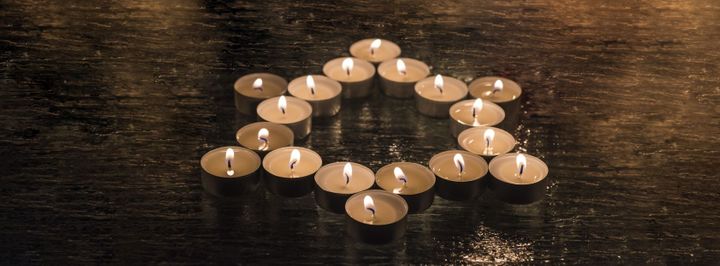Today, another Holocaust survivor passed away. I do not know their name – perhaps you do. Unlike their families who were torn from them before their time, some of these people are dying of natural causes, and others, sadly, of COVID-19. We should not be surprised by this. The Holocaust ended 75 years ago. The youngest survivors are in their 80s.
What will we do when the last survivor is gone? Will the memory of what they experienced die with them? In some ways, at this time of pandemic-necessitated social distancing, we are seeing what life will be like when we can no longer bring survivors to our communities.
Organizations around the country have developed a variety of innovative answers to this problem. Some have turned to the survivors’ children. Others have created holographic representations, recording the survivors in a novel way so they will be here, virtually, even after they pass.
Our tradition provides us with another solution, however, one that does not necessarily require survivors or their children. The Holocaust is but one of many atrocities that have been perpetrated against the Jewish people. We remember these stories – the crimes of the Egyptians, the desecration by the Assyrians, the brave Jewish-Persian queen who stood up to Haman – not because we have survivors to remind us of them. We remember these atrocities because we recount them to each other every year at Passover, Chanukah, and Purim.
What if we remembered the Holocaust the way we remember the Exodus from Egypt, through ritualized storytelling?
This is what gave me the idea of creating a new way of observing Yom HaShoah. Called Light from the Darkness: A Ritual for Holocaust Remembrance, we recall lessons about standing up for each other and being vigilant against the rise of hatred in our communities. The seder gives us a structure – an ordered telling of the story that highlights the lessons we want to be carrying forward, such as welcoming the stranger and working in partnership with God.
The power of current Yom HaShoah programs, designed around listening to survivors, is the personal testimony of the survivors. First-person narratives, both from survivors through their testimony and from victims through their diaries, are also the power behind Light from the Darkness. Even when the survivors are gone, their words, repeated in our own voices, will echo through the generations.
Telling the story is only part of the traditions. The Passover seder is full of ritualized actions: lighting candles, dipping vegetables in salt water, spilling drops of wine. Each of these actions is a physical, tactile way to embody the story.
This new Yom HaShoah ritual of remembrance includes these sorts of actions too: dipping potato skins in salt water to remember the starvation and the tears of the ghetto, eating sweet oranges out of their bitter rinds to remember the hope that some were able to find hidden beneath the bitterness of their lives, grasping each other by the wrist to draw inspiration from those who helped the Jews. This year, we may have to “grasp” each other from afar, but we know that we are all helping, simply by keeping our distance.
After the war, a photographer snapped a quiet moment of a woman lighting candles in the displaced person camps. She has two candles but only one is in a traditional candlestick. The second candle sits on an upside-down cup. This is a beautiful demonstration of the enduring determination of Holocaust survivors, and the new ceremony honors this ingenuity and perseverance by lighting candles on mismatched candlesticks – one on a fancy candlestick and one on a simple upside-down cup.
Light from the Darkness is filled with song and story, ritual and remembrance. It is a guided experience that helps us fulfill the responsibility that Holocaust survivors have entrusted to us – to remember, to tell the story, and to act.
Since its pilot four years ago, this commemoration has been held annually in religious schools and synagogues from New York and San Francisco to Texas and Canada. This new experience enables us to sustain Holocaust remembrance as we transition to a world without survivors. It is an observance we can do in our own homes, even when we must remain apart. There will always be a place for holograms and family stories, but we also need a more personal, ritualized remembrance.

0 Comments